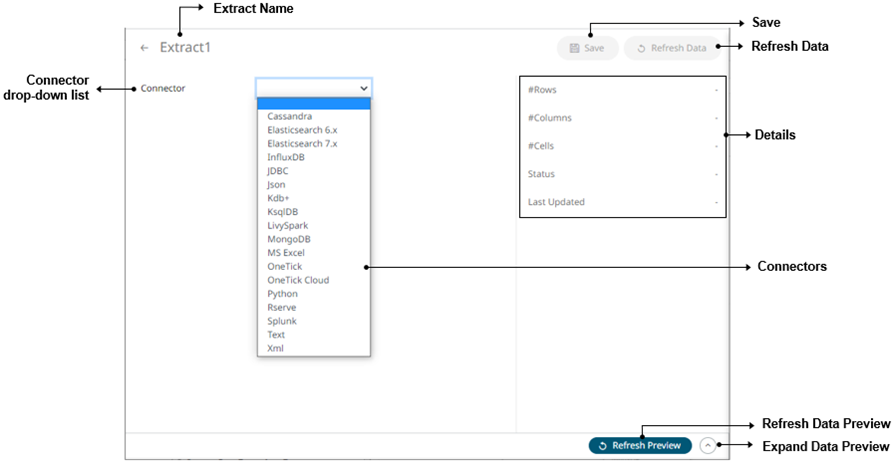Creating Data Extracts
One of the methods in accessing data is by retrieving only the required results into memory, by querying on demand, pushing aggregation and filtering tasks to underlying big data repositories, or queryable data extracts.
This is commonly known as a ROLAP implementation, where the product is dynamically writing data queries to the underlying data repository and retrieving aggregated and filtered datasets. Given the on-demand nature of this method it is more suitable to exploratory data analysis but requires dynamic query generation.
Data extracts are created in the server administration environment. These server-based data extracts can then be retrieved and used through the Panopticon Data Extract connector.

|
Data Extract Property |
Description |
|
Name |
Data extract name. |
|
Connector |
Data connector used in the extract. |
|
#Rows |
Number of rows of the data extract. |
|
#Columns |
Number of columns of the data extract. |
|
#Cells |
Number of cells of the data extract. |
|
Status |
Status of the data extract. Values include IDLE or RUNNING. When saving a new data extract, it is first run and the status changes to RUNNING. Consequently, the Refresh Data icon is disabled. When the data extract is complete, the status changes to IDLE and the Refresh Data icon is enabled. |
|
Last Updated |
The Date/Time when the data extract is last completed or updated. |
A sample data extract using the MS Excel connector before refreshing the data:

NOTE: A * symbol appears beside a data extract that is not yet refreshed.
After refreshing the data:

Steps:
1. On the Extracts tab, click  .
.
The Extracts tab displays with the following sections:

|
Section/Panel |
Description |
|
Extract Name |
Name
of the data extract. Click the |
|
Connector drop-down list |
Includes the non-streaming connectors to extract data from. |
|
Save |
Save the changes made on the Extracts tab. |
|
Refresh Data |
Refresh the data after modifying and saving changes on the Data Extract page. You can also opt
to click Cancel Refresh Data |
|
Details |
Display the details of the data extract including the number of rows, columns, cells, status, and the last time it was updated. |
|
Refresh Data Preview |
Refresh the data preview. |
|
Expand Data Preview |
Expand the Data Preview pane. |
2. Enter the Name of the data extract. This should be unique and should only contain letters (a to Z), numbers (0 to 9), and underscores.
3. Click  or press Enter to apply the name.
or press Enter to apply the name.
4. Select any of the following non-streaming connectors:
· InfluxDB
· JSON
· Kx kdb+
· ksqlDB
· MongoDB
· MS Excel
· OneTick
· Python
· Rserve
· Splunk
· Text
· XML
The tab page changes depending on the selected connector.



 .
.